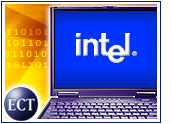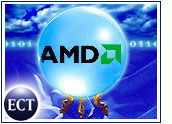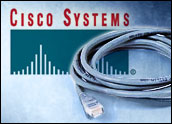
Research firm IDC has predicted overall PC semiconductor revenue, from desktop and mobile units combined, will grow 18 percent to US$53.6 billion in 2004, marking the highest annual growth rate expected during the study’s forecast period. From 2003 to 2008, IDC forecast, the PC semiconductor market will grow at a compound annual growth rate (CAGR) of 7.8 percent, rising from $45.4 billion to $66.1 billion over those five years.
The study noted that economic recovery and rising demand for PCs boosted the semiconductor market in the second half of 2003. However, revenue growth was largely limited to rising semiconductor unit sales, rather than rising prices, and to sales of systems to consumers, as opposed to corporations.
IDC PC chip analyst Shane Rau told the E-Commerce Times that although revenue will continue to grow each year in the forecast, what stands out about 2004 is the strength of the growth. In contrast with 2004’s anticipated 18 percent growth, the other years will have high-single-digit revenue growth.
“The recovery of the PC semiconductor market will hit its stride in 2004, specifically in the second half of the year,” Rau said.
What Drives the Recovery?
In explaining why 2004 will be the standout year, Rau noted that “economic recovery is the most general driver [of semiconductor growth]. The economy in the U.S. started its recovery in 2003, but not the whole year…. Particularly driven by the economy is IT spending, which in turn drives purchase of PCs — and specifically desktop and mobile PCs that helped drive the market in this report.
“This year, we’re looking for growth in system sales — desktop and mobile PCs in general — of about 11 percent unit growth,” he added. “As you drill down, the mobile PC market growth is going to be about 26 percent, desktops about 6 percent. Growth in mobile PC units is driving sales, so we start to see why PC semiconductor growth will be relatively healthy this year, relying on those system sales.”
In terms of revenue rather than unit sales, Rau estimated about 32 percent growth in 2004 for mobile PC chips and just shy of 12 percent for desktop chips.
Strength in Mobile Markets
Over the five-year period, mobile PC semiconductor revenue will grow at a healthy compound annual growth rate of 16.1 percent, compared with desktop PC semiconductor revenue growth of 2.9 percent, according to the study. As a result, mobile PC chip revenue will nearly equal desktop PC chip revenue by 2008, up from roughly 50 percent of the desktop total in 2003.
Rau identified three key trends going forward — mobility, connectivity and the consumer PC trend, with PCs becoming more like consumer devices or connecting to consumer devices, such as a consumer PC that connects to a high-definition TV and broadcasts content to that TV. To achieve that goal, he said, “it is going to take PC chip providers to focus on desktop PCs and integrating the chips into PCs so they have these capabilities. If that does not happen, the chips representing higher value won’t move into the box, so chip integration will suck value out of chips.”
“In the mobile PC segment, we are seeing more chips coming into mobile PCs, especially for wireless LAN, alongside the processor chip, graphics chips, memory and chips to manage heat and output. The communications subsystem of the mobile PC semiconductor market will achieve the highest growth rate during the forecast period, driven by the growth of wireless connectivity, such as WLAN technology embedded in mobile PCs.”
Global Reach
One major driver of worldwide PC unit sales is growth in certain geographic regions. For example, China is a strong area for PC unit growth. “China has already surpassed Japan at 13 million units last year and is growing to the point where it will represent 14 to 15 percent of the worldwide market by the end of our forecast period,” Rau said.
He cited the wireless LAN chip market as an area in which American companies will remain dominant. However, the likelihood that Taiwanese companies will move in because of low prices represents a threat to U.S. companies’ market share.























































Social Media
See all Social Media